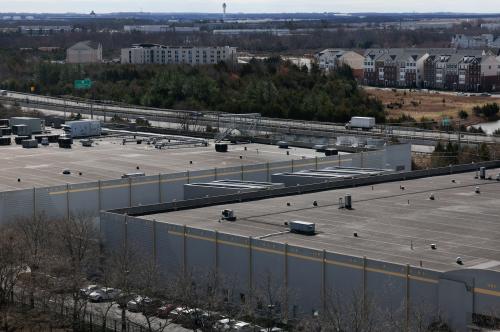Editor’s note: statistics cited in this piece come from the
author’s paper
on the impacts of technology on employment.
U.S. manufacturing has seen tough times over the past few decades. Employment in that sector has dropped from around 14 percent of the U.S. workforce in 1996 to almost 8 percent now. Many jobs have shifted overseas as employers seek low-cost labor and nations with fewer safety and environmental regulations.
But in recent years, the outlook has turned more bullish. There has been a resurgence in American manufacturing. After reaching a low point of 11.5 million jobs in 2010, manufacturing employment increased to around 12.3 million in 2016. That still is down from 14.5 million in 2006, but better than the depths of the Great Recession.
Indeed, a recent New York Times article found that manufacturing output has achieved a record high in the most recent quarter. Workers now are producing 47 percent more than 20 years ago. Through the development of automation, robotics, and advanced manufacturing, the sector has bounced back along with the overall economy.
Technology is one of the reasons for this resurgence. We are seeing the rise of automation and robotics in many sectors. Some restaurants now are using robots to deliver food and are deploying self-ordering kiosks for customers. There are driverless cars in California, Washington, and Texas. Amazon now has around 15,000 robots who work along its 50,000 humans.
The number of industrial robots is rising. In 2013, there were 1.2 million robots in factories and warehouses. The total rose to 1.5 million in 2014 and is expected to increase to 1.9 million next year. Japan leads the way in use of industrial robots with over 306,000 robots in use, compared to 237,000 in North America, 182,000 in China, and 175,000 in South Korea and Germany each.
Robots are getting more sophisticated and adept at performing complex tasks. The cost differential with humans is narrowing, to the advantage of robots. The Wendy’s restaurant chain recently announced that it was introducing self-service kiosks for ordering in its 6,000 restaurants.
Estimates for labor cost savings in various countries through automation and robotics now are averaging around 16 percent in industrialized nations. But places such as South Korea have seen 33 percent cost savings, and Japan has seen a 25 percent savings.
The convergence of these developments means that robots are helping to increase overall output and save money, but not helping to add jobs. In looking at data from 2010 to 2016, manufacturing has seen 10 to 20 percent increases in output, but only a 2 to 5 percent increase in jobs.
The slow growth of manufacturing jobs has troubling ramifications for employment patterns and the overall workforce. According to economist Larry Summers, “if current trends continue, it could well be that a generation from now a quarter of middle-aged men will be out of work at any given moment”. That has enormous political and social consequences. It helps us to understand the 2016 electoral success both of Donald Trump and Bernie Sanders. Voters have a sense that things are not going well for working class votes and may actually get worse. Those individuals are understandably worried and anxious.
Future job projections from the U.S. Bureau of Labor Statistics reveal that most job creation over the next decade is going to come in health care and professional services. Indeed, by 2022, manufacturing jobs are expected to drop.
This means that schools need to restructure their curricula so that students get better training in science, technology, engineering, and math. There is a great need for workers with STEM skills as systems analysts, software developers, and biomedical engineers, among other professions.
The policy challenges for manufacturing are enormous. The country needs to invest in infrastructure, reform tax policy, and boost trade and global markets. The world is at an inflection point in a number of these areas, and there are many threats to globalization and free trade today.
Small firms are particularly at risk. They create many of the jobs in the United States, but it is hard for them to achieve the economies of scale and productivity boosts of advanced manufacturing. High upfront costs make it difficult to adopt the latest technologies and compete for workers with the most advanced skills.
Maintaining competitiveness amidst these domestic and global challenges is a big issue for many firms. Companies need to invest in technology, deploy data analytics, and embrace emerging tools such as 3-D printing and smart appliances. Those that do this will be able to compete while others get left behind.
The Brookings Institution is committed to quality, independence, and impact.
We are supported by a diverse array of funders. In line with our values and policies, each Brookings publication represents the sole views of its author(s).




Commentary
How technology is changing manufacturing
June 2, 2016